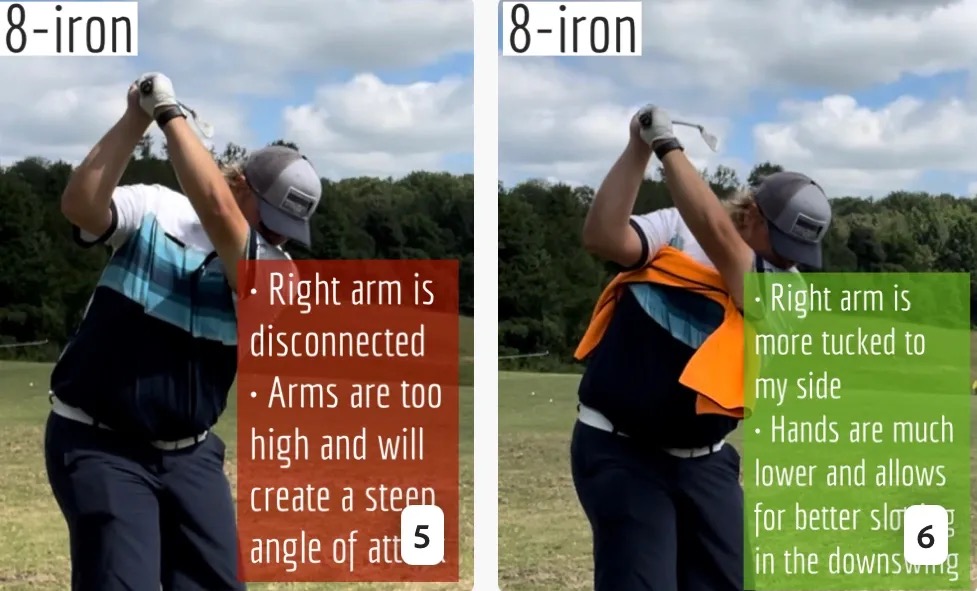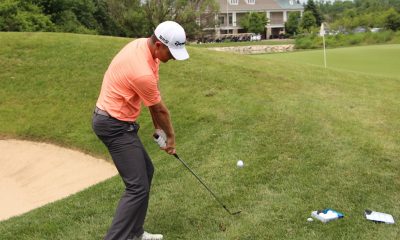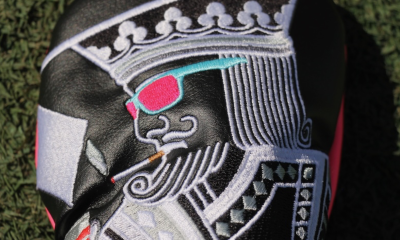Instruction
You need to understand your golf swing “signature”

The golf swing is one of the most complex movements in all of sports. The search for the perfect swing started hundreds of years ago, and we have seen it develop at a rapid pace in the past 20 years. Equipment companies, universities, the USGA, and NGF are just some of the agencies that have attempted to solve the riddle of golfer performance.
So what have we learned to date?
That was one of my biggest questions when I set out on a voyage to sort through all that was available in the world of published golf research, and it led me to where I am today. I decided that I would need to own and develop my own golf swing analysis software, a project that became a fusion of my years of teaching experience with a man I think is the most influential researcher in the history of the game, Dr. Steven Nesbit.
People often ask me what we’ve learned so far, and I tell them that we have uncovered a lot about how the golfer influences and puts their load on a golf club. Through the use of optical 3D-motion capture (I use a system called GEARS), we collect a swing’s data points and then process that data in a mathematical logarithm that we have designed to report on how the golfer pulled, pushed, and twisted on the grip to create the movement that you see.
The way in which the golfer influences the club is extremely complex, and the explanation of exactly what is happening in a golf swing explains why the game is so difficult. There are so many variations in style with so many factors intertwined that it makes the explanation fascinating, but often not all that satisfying. Many golfers are looking for that one idea that will transform their swing and game. What we have found is that it’s never just one thing; it’s many things wrapped together, and sometimes the solution can turn up to be something completely unexpected.
My Jacobs 3D’s proprietary golf research software takes the recorded data and processes the actions of the golfer to show how the golfer created their movements. It runs as deep as analyzing the movement of each major joint in the body and how every separate joint can affect the whole. Using it, we have begun to isolate the traits of superior golfers. There are a set of parameters that we can say are characteristics of a high-performing swing, and as time goes on we will share all of these with the GolfWRX Community.
There is, however, one thing that is unique to every single golfer: a swing “signature,” so to speak. A swing signature is the path that the movement of the center of the golfer’s hands take during the swing, which we call the “hub path.” The images below are from my book Elements of the Swing, which explain the hub in detail.
What does a golfer’s hub path tell us? We have found that the unique movement of this Hub Path can give an overall picture of the internal and external movements of the golfer. It can describe how a golfer is taking advantage of motion of the body, but it can also show how a golfer is compensating for their weaknesses in body movement.
In the video at the top of the story, I explain how you can figure out your own Hub Path and how you can use it to analyze your swing. I hope you enjoy it!
- LIKE86
- LEGIT19
- WOW6
- LOL3
- IDHT2
- FLOP6
- OB5
- SHANK36
Instruction
Clement: Stop ripping off your swing with this drill!

Not the dreaded headcover under the armpit drill! As if your body is defective and can’t function by itself! Have you seen how incredible the human machine is with all the incredible feats of agility all kinds of athletes are accomplishing? You think your body is so defective (the good Lord is laughing his head off at you) that it needs a headcover tucked under the armpit so you can swing like T-Rex?
- LIKE0
- LEGIT0
- WOW1
- LOL0
- IDHT0
- FLOP0
- OB0
- SHANK1
Instruction
How a towel can fix your golf swing

This is a classic drill that has been used for decades. However, the world of marketed training aids has grown so much during that time that this simple practice has been virtually forgotten. Because why teach people how to play golf using everyday items when you can create and sell a product that reinforces the same thing? Nevertheless, I am here to give you helpful advice without running to the nearest Edwin Watts or adding something to your Amazon cart.
For the “scoring clubs,” having a solid connection between the arms and body during the swing, especially through impact, is paramount to creating long-lasting consistency. And keeping that connection throughout the swing helps rotate the shoulders more to generate more power to help you hit it farther. So, how does this drill work, and what will your game benefit from it? Well, let’s get into it.
Setup
You can use this for basic chip shots up to complete swings. I use this with every club in my bag, up to a 9 or 8-iron. It’s natural to create incrementally more separation between the arms and body as you progress up the set. So doing this with a high iron or a wood is not recommended.
While you set up to hit a ball, simply tuck the towel underneath both armpits. The length of the towel will determine how tight it will be across your chest but don’t make it so loose that it gets in the way of your vision. After both sides are tucked, make some focused swings, keeping both arms firmly connected to the body during the backswing and follow through. (Note: It’s normal to lose connection on your lead arm during your finishing pose.) When you’re ready, put a ball in the way of those swings and get to work.

Get a Better Shoulder Turn
Many of us struggle to have proper shoulder rotation in our golf swing, especially during long layoffs. Making a swing that is all arms and no shoulders is a surefire way to have less control with wedges and less distance with full swings. Notice how I can get in a similar-looking position in both 60° wedge photos. However, one is weak and uncontrollable, while the other is strong and connected. One allows me to use my larger muscles to create my swing, and one doesn’t. The follow-through is another critical point where having a good connection, as well as solid shoulder rotation, is a must. This drill is great for those who tend to have a “chicken wing” form in their lead arm, which happens when it becomes separated from the body through impact.
In full swings, getting your shoulders to rotate in your golf swing is a great way to reinforce proper weight distribution. If your swing is all arms, it’s much harder to get your weight to naturally shift to the inside part of your trail foot in the backswing. Sure, you could make the mistake of “sliding” to get weight on your back foot, but that doesn’t fix the issue. You must turn into your trial leg to generate power. Additionally, look at the difference in separation between my hands and my head in the 8-iron examples. The green picture has more separation and has my hands lower. This will help me lessen my angle of attack and make it easier to hit the inside part of the golf ball, rather than the over-the-top move that the other picture produces.


Stay Better Connected in the Backswing
When you don’t keep everything in your upper body working as one, getting to a good spot at the top of your swing is very hard to do. It would take impeccable timing along with great hand-eye coordination to hit quality shots with any sort of regularity if the arms are working separately from the body.
Notice in the red pictures of both my 60-degree wedge and 8-iron how high my hands are and the fact you can clearly see my shoulder through the gap in my arms. That has happened because the right arm, just above my elbow, has become totally disconnected from my body. That separation causes me to lift my hands as well as lose some of the extension in my left arm. This has been corrected in the green pictures by using this drill to reinforce that connection. It will also make you focus on keeping the lead arm close to your body as well. Because the moment either one loses that relationship, the towel falls.


Conclusion
I have been diligent this year in finding a few drills that target some of the issues that plague my golf game; either by simply forgetting fundamental things or by coming to terms with the faults that have bitten me my whole career. I have found that having a few drills to fall back on to reinforce certain feelings helps me find my game a little easier, and the “towel drill” is most definitely one of them.
- LIKE11
- LEGIT1
- WOW2
- LOL0
- IDHT0
- FLOP2
- OB0
- SHANK8
Instruction
Clement: Why your practice swing never sucks

You hear that one all the time; I wish I could put my practice swing on the ball! We explain the huge importance of what to focus on to allow the ball to be perfectly in the way of your practice swing. Enjoy!
- LIKE0
- LEGIT0
- WOW0
- LOL0
- IDHT0
- FLOP0
- OB0
- SHANK1
-

 Opinion & Analysis3 weeks ago
Opinion & Analysis3 weeks agoThe Wedge Guy: Golf mastery begins with your wedge game
-

 19th Hole1 week ago
19th Hole1 week agoTour pro calls Anthony Kim a ‘f*****g idiot’ following Instagram comeback post
-

 19th Hole1 week ago
19th Hole1 week agoThis Rory McIlroy post-round ‘The Match’ moment is going viral…but all is likely not what it seems
-

 19th Hole1 week ago
19th Hole1 week agoAnthony Kim’s speculated LIV Golf sign-on fee may surprise you
-

 19th Hole3 weeks ago
19th Hole3 weeks ago6-time Euro Tour champ says Patrick Cantlay ‘should be nailed with a huge fine’ over Genesis incident
-

 Whats in the Bag2 days ago
Whats in the Bag2 days agoScottie Scheffler WITB 2024 (March)
-

 Tour Photo Galleries3 days ago
Tour Photo Galleries3 days agoPhotos from the 2024 Arnold Palmer Invitational
-

 Whats in the Bag1 week ago
Whats in the Bag1 week agoAnthony Kim WITB 2024 (February)















doubou2014
Jul 16, 2017 at 8:09 pm
One can only wonder how Jones, Nelson, Snead, Hogan, Nicklaus, Palmer and Player coped with the golf swing.
Steve Wozeniak
Jul 15, 2017 at 12:29 pm
The golf swing is not a complex movement at all……..you can sure make it that way if you want!!!
ooffa
Jul 13, 2017 at 2:11 pm
Another inane question. Please stop. Why don’t you know this answer? You present yourself as an expert on everything else!
ooffa
Jul 14, 2017 at 6:42 am
Calling out your know it all attitude, your rude combative tone and your blatant clueless posts are a public service. I am proud to offer this service to this forum. It’s what you wrongfully call trolling but what others call a great help in ridding this site of your garbage spewing posts. Oh, and BTW as you would say..soooooo obvious…..
ooffa
Jul 15, 2017 at 6:28 am
Suspicions confirmed. Now please stop with your rudeness and know it all attitude. When your tone changes so will these comments.
Matt
Jul 12, 2017 at 8:09 pm
Pretty interesting. However I think shaft deflection is sorely lacking in the models. Without knowledge of exactly where the shaft is bending and in what orientations knowing where the hands (hub in your lexicon) and clubhead are are somewhat meaningless. In other words. In large part the way a tour player releases the hands thru impact is a direct result of how they use forces to load the shaft. Club face angle is really key as well in determining what signature a golfer employs.
ooffa
Jul 14, 2017 at 6:44 am
your point?
Matt
Jul 15, 2017 at 12:53 am
I am familiar with shaflab. I don’t think they reached the conclusions you describe. Even if they did, its ancient technology – Fujikura’s Enso lab is a much better tool and they certainly don’t reach those conclusions. The Laws of the Golf Swing sounds more like the maybe there’s a propensity for this thing that we are going to claim is a law regarding the golf swing. I’m not buying loading patters and body type are any more than ever so slightly positively correlated. Why? Because I see so much evidence against it.
Deadeye
Jul 12, 2017 at 7:15 pm
I have Zepp. Not really of any help to me. I think things like it are only band aids that cause you to manipulate the club to obtain a picture perfect result. It’s just to support the concept of a positional golf swing as opposed to a directed energy (my term)) swing such as taught by Shawn Clement.
Of course, golf being what it is, use whatever works for you.
Shawn Clement
Jul 12, 2017 at 1:36 pm
Hi Michael!
What methods do you use to get the higher handicap player to close in on the tour player characteristics? What was the focus at the time of the swing in each of the players graphs that you displayed here?
Thank you! Shawn
ooffa
Jul 12, 2017 at 5:18 pm
No it’s not!
ooffa
Jul 16, 2017 at 2:31 pm
Please control your negativity. It is not necessary on this forum
CD
Jul 14, 2017 at 3:41 am
Must be something like apply force along the shaft, away from the target initially, tuck that right elbow and start extending the arm, twist around the shaft to close the face, get your hands wide and low, then yank it up through impact. I would say the hub path describes an athletic motion like throwing a ball far; you load the right arm, flex the elbow, then the elbow leads as you extend the arm. The intent – I don’t think there is an intent. I think top players watched others when they were young and allowed a human being’s own innate ability to throw (or do anything athletic) develop without conscious thought. When I’m throwing at a target I’m thinking of nothing, all someone once told me was ‘if your ball hits the target before the runner they are out’.
In this instance, I would say to a high handicapper with a poor ‘hub path’ either intend to throw later, or at a different target. I might pose them an impact with body open and shaft leaning, get them to release the club forward five times and then let them ‘just swing’. All are generally surprised at the amount of lag they have without thinking about how they got to and through such a ‘position’. Or with a really top player I might work on them getting tier hands wider initially in transition whilst holding on the right leg.
Meiko
Jul 12, 2017 at 8:14 am
Zepp shows your hand path. SkyPro will show you more data e.g. face angle at p6. But is on the shaft. SkyPro is also good for putting e.g. face angle at impact. Both $150. I recommend them both.
ooffa
Jul 12, 2017 at 5:21 pm
No you don’t! OMG stop being foolish!
ooffa
Jul 13, 2017 at 7:52 am
cranky, cranky, cranky
ooffa
Jul 13, 2017 at 2:12 pm
Wow, extra cranky today. Take a vitamin gummy. It may help.